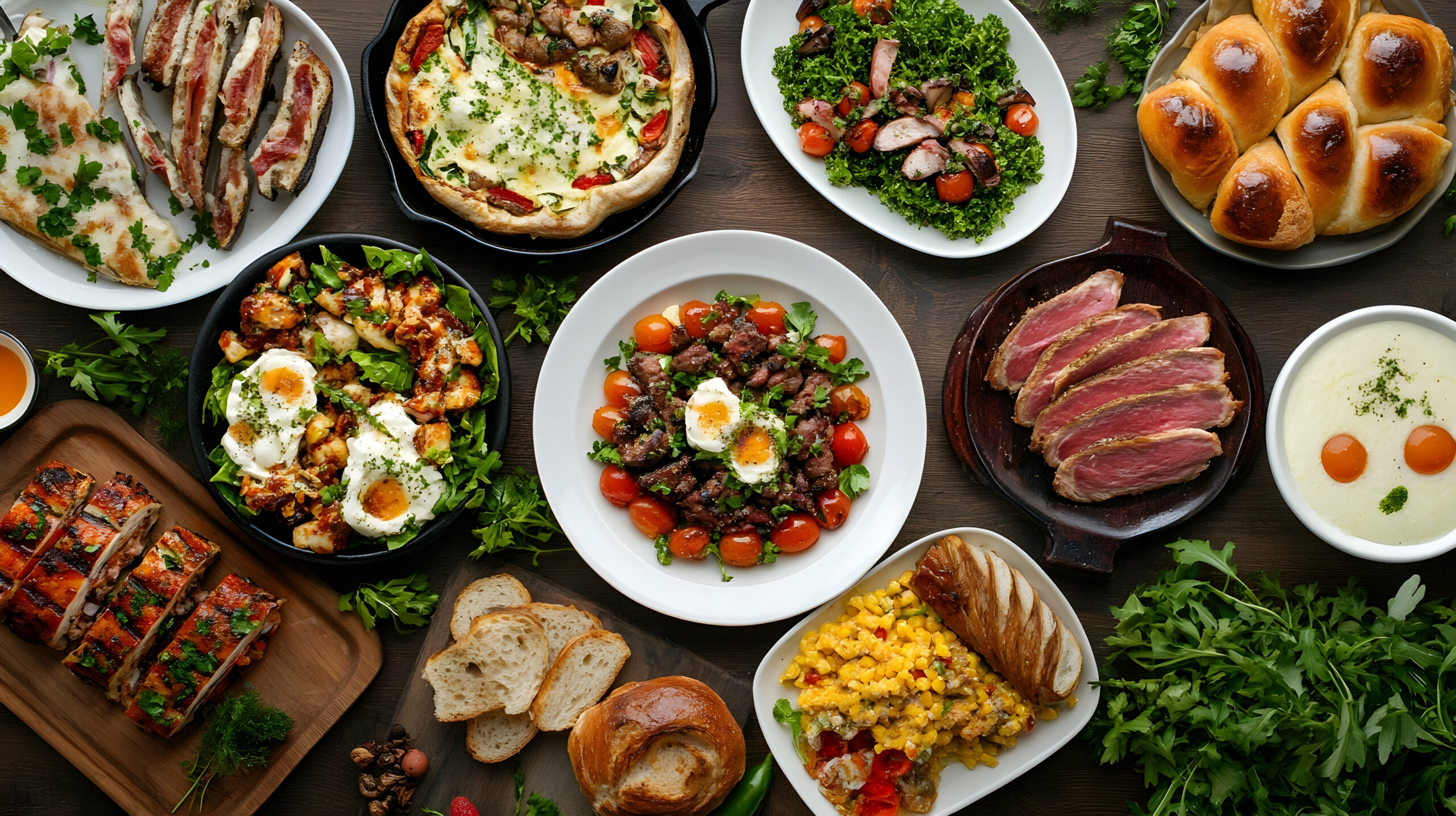Eat more to lose more? Sounds too good to be true, right? There’s a strategy that can turn the calorie clock back and give you more space on your plate: it’s called reverse dieting, and it may be the weight loss strategy you’re looking for in your current journey.
Reverse dieting is a method that allows us to slowly increase our daily calories without gaining any weight in the process. It pushes us past plateaus, heals hunger, and increases our metabolism.
The road of reverse dieting, however, isn’t the easiest to walk. In fact, it may feel more like a tightrope. You have to find the right balance between eating more but not too much too soon in order to get it right.
Below, you’ll find 3 mistakes you could make while increasing your calories. Skip these 3 trip-ups so you can start eating more and reap all the rewards of reverse dieting.
First, What is Reverse Dieting?
When we cut calories to lose weight, eventually our body adapts and our metabolism slows down. Weight loss plateaus, so we cut even more calories. On and on we go until we’re living on lettuce.
Reverse dieting inches our daily calories and our metabolism back up. With this strategy, we can eat more without gaining any weight back.
But the increase has to be slow and strategic. And the food we add in must be from whole, nutritious foods. There’s a right way and a wrong way to reverse your diet. Let’s take a closer look below.
3 Mistakes to Avoid While Reversing Your Diet
Messing up your reverse diet could mean losing all your weight loss progress. This slow and steady process is well worth the time and careful attention. Skip these mistakes and stick with your goals.
1. Forgetting to Prioritize Protein
Consuming enough protein while reverse dieting is crucial to your success. Protein from your diet allows your body to build muscle. Muscle is one of the main mechanisms by which your body speeds up your metabolism during your reverse diet. The more muscle you have, the faster your metabolism will be.
To build muscle, your body has to synthesize more protein than it’s breaking down during your workouts. This means that you need a surplus of protein from your diet.
While the RDA recommends 0.37 grams per pound of body weight, this number is the bare minimum we need in order to survive.
Optimizing protein is another story. If you’re interested in thriving and gaining the most benefits from your reverse diet, look at the many studies for active adults and athletes. One 2018 study by Stokes et. al says that the actual amount of protein you need to promote muscle growth is 0.73g-1.0g per lb of body weight per day.
The disparity between these two numbers has to do with your current body composition. Those with lower body fat should eat 1 gram of protein per pound of body weight. Those with a higher body fat percentage should eat 1 gram of protein per pound of their goal body weight.
2. Skipping Strength Training
Boost the benefits of reverse dieting by strength training consistently throughout the entire process. Strength training is critical for building lean muscle and, therefore, increasing your metabolism, which is why you’re reverse dieting in the first place.
Don’t skimp on strength training. In addition to helping you move better and feel more capable, strength training is the best form of exercise for burning calories and body fat.
Consistency makes muscle growth easier. Sticking with the same strength training plan with the same exercises week to week will allow you to build muscle more efficiently. If you’re a beginner, pick a simple schedule you can stick with. Try the 3 Day Full Body Split. Here’s the layout:
Monday: Full Body Workout 1
Tuesday: Off
Wednesday: Full Body Workout 2
Thursday: Off
Friday: Full Body Workout 3
Saturday: Off
Sunday: Off
Gradually increase your weights or add resistance bands as you grow stronger (this process is called “progressive overload”). Don’t worry. You won’t bulk up. Pushing your strength to its limits will keep your metabolism revved up the longest.
3. Adding Calories Incorrectly
Reverse dieting is all about taking incremental steps. If you’re trying to avoid fat gain, count your calories carefully (I’ll tell you what your new calorie goal should be below). Your caloric increases must be small and strategic for your metabolism to adjust at the same rate.
The food that makes up those extra calories matters too. Think about it this way: Your body responds to 100 calories from soda very differently than it does to 100 calories from raw almonds. Tossing back a twinkie or noshing on nachos won’t help you keep body fat off.
The best foods to add into your higher-calorie diet are whole, nutritious foods that fit within your macro goals. Think chicken breast, grass-fed beef, free-range eggs, berries, leafy greens, beans, and lentils.
How to Reverse Diet the Right Way
Whenever your body needs a break from dieting, when you’ve reached your weight loss goal, or when you’ve hit a plateau, take these five steps:
- Write down your “red light” weight: This is the number that will warn you that you’re increasing your calories too quickly. For most people, it’s about 4/5 pounds heavier than their current weight.
- Figure out your current calorie intake: Tally up the number of calories you are eating each day.
- Increase your calories: Write down your new calorie goal. I recommend increasing your calories to 100 more than you’re currently eating daily. Make sure your diet is full of healthy, whole foods that fit within your macros too. Eat at this new calorie goal until you hit your “red light” weight.
- Decrease, increase, decrease, increase: Once you hit your “red light” weight, drop the 100 calories again. Continue this back and forth (usually for about 3-4 weeks) until your body adapts to the higher caloric intake without gaining weight.
- Continue increasing calories: Repeat the process until you’ve increased your calories by 400-500. The entire process will take about 3-6 months for most people but sometimes longer..
Join the Full Plate Club
Women must realize that you can’t live in a caloric deficit. It is not ideal for long term success. Implementing reverse dieting helps you to sustain a healthy metabolism while still reaching your goals. Most women need to reverse diet at least 2 times a year! Follow this phase with a caloric deficit to slowly chip away at your weight loss goals! Delicious, nutritious, satiating meals are right around the corner. Your body needs adequate food to thrive, and you don’t have to sacrifice your weight loss progress to start eating like a normal human being again.
Interested in learning more about reverse dieting? Download my step by step guide on how to implement it correctly here: Reverse Dieting Guide
Or join the LEAN monthly membership for daily support and accountability while reverse dieting! Join Here!





